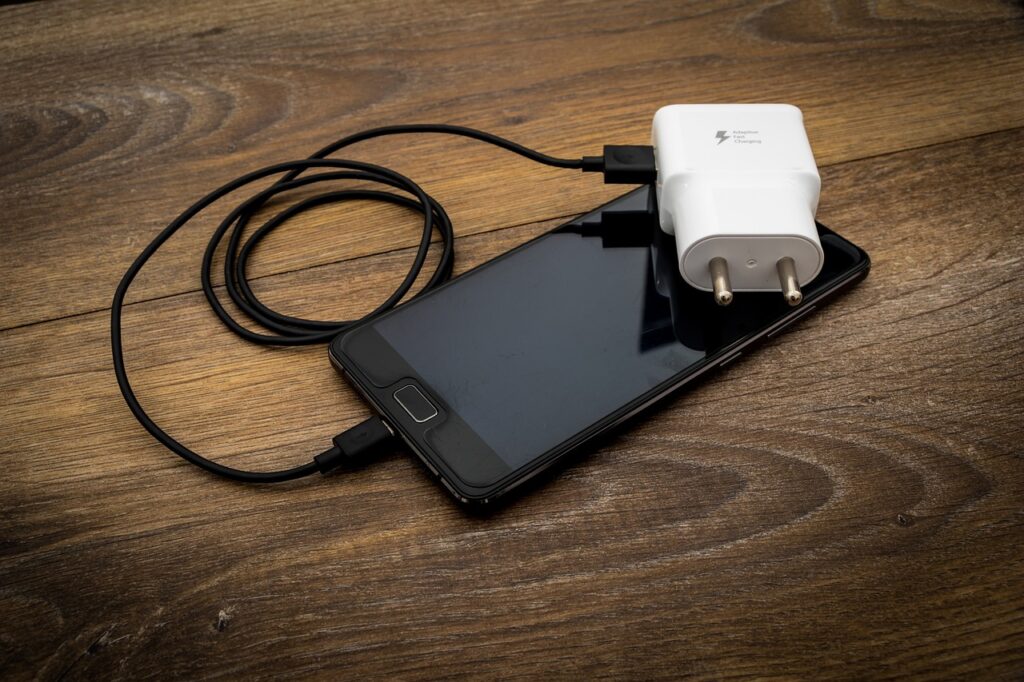Have you ever found yourself stuck in a foreign land with a dead phone battery, or even worse, a stolen or damaged device? The very idea can make any traveler tremble. In a time where our smartphones are our essential tools, ensuring their safety and functionality while on the go is crucial.
This realization hit me after a scenario that made me wonder, “What if my smartphone got stolen?” Trying to reach all my crucial documents without it was a challenge, especially since I heavily rely on 2FA for almost everything. This incident emphasized the critical need for a backup plan, especially when traveling far from home. Being ready for the unexpected can make all the difference between a smooth journey and a logistical nightmare.
Meet the unsung hero of my travel escapades: my trusty second phone. Not just any device, it’s my old smartphone with a prepaid SIM card, securely stashed away from my primary one. Whether snug in my hostel or in a separate bag on my adventures, this backup brings me peace of mind. The knowledge that I have a backup ready if my main phone is lost, stolen, or damaged is a huge relief.
This secondary phone isn’t just a spare; it plays many crucial roles in my travel toolkit. It acts as a secondary emergency contact number and stores vital documents like my passport, itinerary, and insurance details. It also holds essential apps like my password manager, email, and travel-related tools. Most importantly, it lets me remotely deactivate my main phone, a handy feature to deter potential thieves.
Perhaps the most transformative feature is the ability to activate my main line on this secondary device using an eSIM. This technology allows for swift recovery of my primary phone number without the need for a physical SIM card, facilitated through my provider’s website. It’s a game-changer, providing a seamless transition and ensuring I’m never truly disconnected, even in the most adverse situations.
The advice I now passionately share with fellow travelers is simple yet potent: reconsider the fate of your old phones. Instead of selling them, turn them into invaluable travel companions by setting them up with a pre-paid SIM and loading them with crucial information. This simple hack can alleviate much of the stress and inconvenience associated with lost or stolen phones.
Moreover, when the time comes to replace my current smartphone, I intend to keep it as a third emergency phone, a ‘third line of defense’ if you will. This phone will stay at home, providing easy access to my essentials upon my return. This approach not only ensures continuity but also adds a layer of security to my digital life, both at home and abroad.
The concept of carrying two phones while traveling might seem like an over-precaution to some. However, as a seasoned traveler who has navigated the globe, I’ve realized the profound benefits this practice offers. Not just for the sake of taking numerous selfies or capturing videos that quickly deplete your battery, but for the overarching sense of security and preparedness it brings.

Another Reddit user shared how carrying a second phone improved their photography experience while traveling. By using the high-quality device exclusively for taking photos, they avoided draining the battery. The additional phone served for navigation, messaging, and handling travel essentials like SIM cards and schedules. At the end of the day, both devices were still charged.
This setup also allowed for charging one phone from the other using a USB-C to C cable, removing the need for bulky power banks and cords. Additionally, getting a second phone for travel doesn’t have to be expensive, as there are many affordable options available in the market, such as budget-friendly models in Singapore or phone rental services in Canada.
The advantages of having a second phone while traveling are manifold. From being a backup in case of loss or damage to your primary device, to acting as a safeguard against significant losses from theft, the benefits are undeniable. The ability to use a local SIM card for cheaper calls and avoiding expensive roaming charges, the convenience of being on two different networks for wider coverage, and the optimization of costs through data roaming strategies, all contribute to a hassle-free travel experience.
Moreover, by distributing tasks between your primary and second phone, you can significantly extend the battery life of both. This means you can navigate tourist spots, capture moments, and stay connected without the constant worry of running out of battery. Additionally, the second phone serves as an exclusive device for secure transactions and two-factor authentication, offering an added layer of security while shopping overseas or accessing online bank accounts.
Now that you’re fully convinced about the myriad advantages of traveling with a second phone, it’s time to get practical and set up your travel-ready second device. Here are the steps and tips to ensure your second phone is not just ready but a robust companion for your adventures.

Step 1: Choosing Your Second Phone
Start with selecting the right device. This doesn’t have to be the latest model; in fact, your old smartphone could be perfect for this role. Ensure it’s unlocked so you can easily use international SIM cards. If you’re buying, consider affordable but reliable options available in various markets.
Step 2: Setting Up a Pre-Paid SIM
For uninterrupted service, opt for a pre-paid SIM card. This could be a local SIM from your destination for cheaper calls and data or an international SIM that works in multiple countries. Remember, the goal is convenience and cost-efficiency, so choose based on your travel needs.
Step 3: Installing Essential Apps
Load your phone with essential travel apps, including maps, translation services, and airline applications. Don’t forget about security apps like a password manager and your email account for easy access. Your choice of apps should reflect the tools you’ll need most while traveling.
Step 4: Storing Important Documents
Digitally store crucial documents such as a copy of your passport, travel insurance, and itinerary. This step is pivotal for security and ease of access. In unfortunate events like losing your primary phone, these documents on your second device can be lifesavers.
Step 5: Setting Up Remote Deactivation
Familiarize yourself with and set up the capability to remotely deactivate your main phone. This feature is crucial if your primary device gets lost or stolen, as it prevents unauthorized access to your personal data.
Step 6: Activating an eSIM
If your second phone supports eSIM technology, take advantage of it. This allows you to quickly switch your main phone line to the second device without needing a physical SIM card, an invaluable feature should your primary phone be indisposed.
Step 7: Physical Protection
Equip your second phone with a sturdy case and screen protector. When traveling, it’s not just digital threats but physical ones that could compromise your device. Depending on your destination, consider water or shock-proof accessories for added protection.
Step 8: Avoiding Public Wi-Fi Pitfalls
While traveling, you might be tempted to use public Wi-Fi, but remember these networks are not always secure. To protect your data, consider using a VPN on your second phone. This encrypts your online activity, safeguarding it from potential hackers.
Step 9: Enable “Find My Phone“
Activate the ‘Find My Phone’ feature for extra security. This function can help you locate your device if it gets lost. While it’s a basic step, it’s often overlooked and can be very effective in recovering a misplaced phone.
Step 10: The Final Check
Before you embark on your trip, do a final run-through. Ensure your second phone is charged, has all necessary apps installed, contains your important documents, and is ready to use. This check is crucial for peace of mind, ensuring you’re prepared for any scenario.
Your travel-ready second phone is not just a device; it’s your lifeline in emergencies, your navigator through unknown streets, and your backup for capturing those spontaneous travel moments. With these practical steps, your second phone will become an indispensable part of your travel kit, offering both convenience and security on your adventures.
The idea of carrying two phones might have seemed cumbersome at first, but once you experience the practicality and peace of mind it brings, you’ll wonder how you ever traveled without it. So, before you set off on your next journey, take the time to prepare your travel-ready second phone. It’s a small step that could make a big difference, turning potential travel troubles into mere blips on an otherwise unforgettable adventure.
Related posts:
Why you should always take TWO phones on holiday
11 Benefits of Buying a Second Phone for Travel





